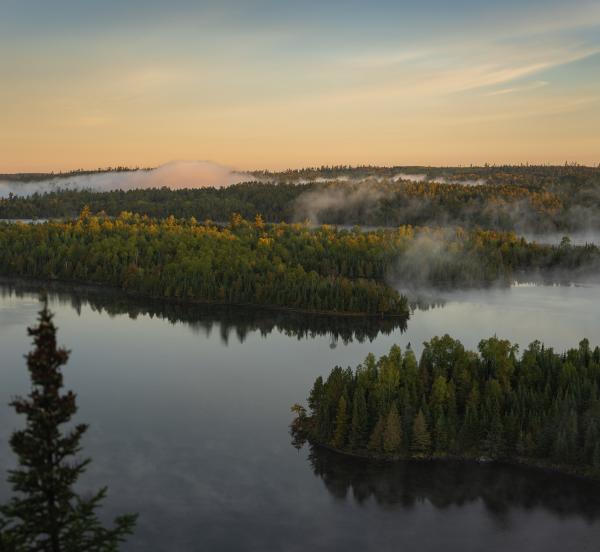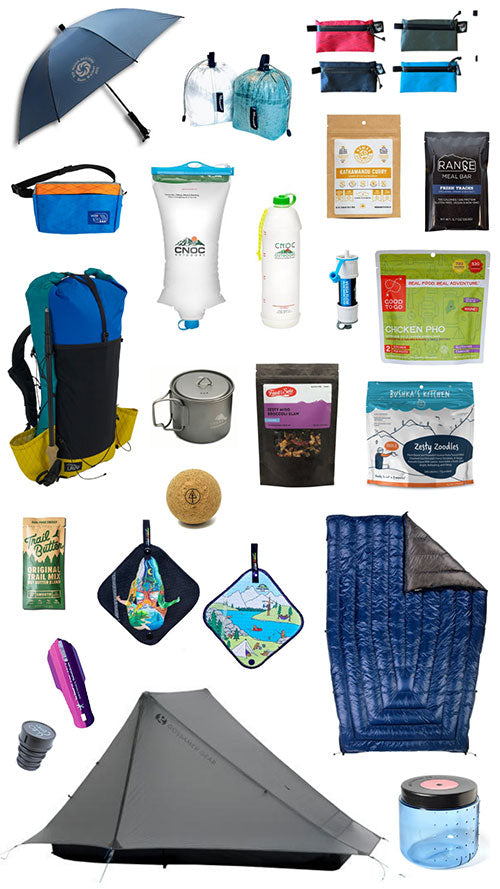
The Boundary Waters Canoe Area Wilderness in northeastern Minnesota is an over 1.1 million acre wilderness nestled against the border of Canada. A truly unique landscape, this canoe country boasts vast amounts of interconnected freshwater in the form of lakes, rivers, streams, and wetlands – the Superior National Forest, which surrounds and encompasses the Boundary Waters, contains over 20% of the freshwater in our entire National Forest System. In the Wilderness area, this water is so clean that paddlers often dip their cups in the middle of lakes and take a drink.
The largest wilderness area east of the Rockies and north of the Everglades, the Boundary Waters is America’s most visited wilderness, as well as a Dark Sky Sanctuary, where stars shine bright and there’s a good chance you’ll see the Aurora Borealis, or northern lights. As the sun sets, and these brilliant stars emerge, you may hear the call of the Loon - just one of many unique species, along with Moose, Black Bear, Lynx, and Wolves, that call this ecosystem home.

Since time immemorial, this place has also been home to, and stewarded by, the Annishinaabe people. Now, this area is within the boundaries of the 1854 Treaty Land, where Annishinaabe hold the right to hunt, fish, and gather. Menomin, or wild rice, grows abundantly in many of the lakes and rivers of the Boundary Waters and surrounding Superior National Forest.
But what is a wilderness area?
Wilderness Areas are wild, outdoor spaces that have the highest degree of wildland protection available under United States law. This year, we celebrate the 60th anniversary of the Wilderness Act, which created our country’s National Wilderness Preservation System. The Boundary Waters was one of the first nine wilderness areas designated under this law.
There are many things that make the Boundary Waters unique, one aspect in particular is the primary mode in which people travel through the wilderness, which is by canoe! Visitors paddle from lake to lake, stopping to carry their gear and canoes over short land distances called portages. But it’s not the only way to travel: the Wilderness has a number of hiking trails, including the Border Route, Kekekabic, and PowWow trails. Folks also come to enjoy what some might call “true winter,” enjoying dogsledding, cross-country skiing, and snowshoeing in the Wilderness when one can safely traverse the thick ice and snow layer that forms across the lakes.

It’s no wonder people from all over the world travel to this unique landscape. It’s also no wonder that hundreds of thousands of people have come together to protect it from looming threats that imperil it. Proposed sulfide-ore copper mining immediately upstream poses irreparable harm to the Boundary Waters and its watershed, which includes Canada’s Quetico Provincial Park, Voyageurs National Park, and the Superior National Forest. According to the Environmental Protection Agency, sulfide-ore copper mining is America’s most toxic industry, causing water pollution wherever it is developed.
Of particular concern is the air, water, noise, and light pollution that would impact the wilderness, destroying everything that makes this landscape special. Runoff from this type of mining is akin to battery acid. Heavy metals such as mercury and lead are released into ground and surface water, damaging plants, animals, and working its way through the ecosystem.
Further, the Boundary Waters sustains a huge outdoor recreation economy, both for the state of Minnesota and local Wilderness-edge communities. Currently, a sustainable, tourism-based economy thrives in the area, and copper mining would spell disaster for the businesses and individuals who rely upon the Boundary Waters for their livelihoods. The boom-bust economic cycles of communities in which international mining operations rule the day would see businesses along the main streets of thriving wilderness-edge communities shuttered.

The Save the Boundary Waters Campaign
In 2013, the Campaign to Save the Boundary Waters was created to protect this irreplaceable ecosystem from toxic mining threats. With so much at stake, there was not a moment to lose, and our movement has steadily gained momentum.
We now are a coalition of over 400 businesses and organizations committed to protecting our nation’s canoe country from the threat of sulfide-ore copper mining. For the past ten years, Save the Boundary Waters has crafted and executed a multi-pronged strategy – including state and federal litigation and legislation, education, outreach, science, and marketing – to stop the destruction of this one-of-a-kind freshwater ecosystem.
There are so many reasons to protect this landscape and others like it, especially when we think about leaving this world in better shape for the next generation.

The Boundary Waters is one of the most accessible wilderness areas in the country, and youth from all over the Midwest and beyond are introduced to the outdoors through summer paddling trips. Whether through the Boy Scouts, Voyageur Outward Bound School, or just on one’s own, this Wilderness offers bountiful opportunities for the next generation to form life-changing connections to nature. It also serves as a critical climate refuge, and its protection is an important part of staving off the global climate change and extinction crises.
Every movement is about people and the power of a collective voice. You can speak loudly for this quiet place by getting involved – whether through spreading awareness to friends and family, becoming a supporter of Save the Boundary Waters, contacting your elected officials, or anything else you can think of! All are welcome, and all voices are needed to save our country’s sacred, wild spaces – for everyone, forever.

A bit about Ingrid:
The Boundary Waters has played an integral role in fostering Ingrid's love of wild places. Prior to becoming Executive Director, Ingrid led the Campaign to Save the Boundary Waters' expanding fundraising program as Development Director from 2018 to 2021, and served on the Outreach team as Arrowhead Regional Organizer from 2015 to 2017. Between these positions, Ingrid attended the Humphrey School of Public Affairs at the University of Minnesota, where she received her graduate certificate in Nonprofit Governance and Management. She is also a graduate of Carleton College, receiving her degree in Environmental Studies with a focus in Conservation and Development. Ingrid is an enthusiastic hiker, painter, and dog mom.
Photo credits:
1 (cover): Steve Piragis
2: Brad Carlson
3: Dave Freeman
4. Alex Falconer














1 comment
Jadie
PBS has a great show and one of the episodes featured this area! It’s truly beautiful and unique.
https://www.pbs.org/video/minnesota-a-better-world-1qq6ij/